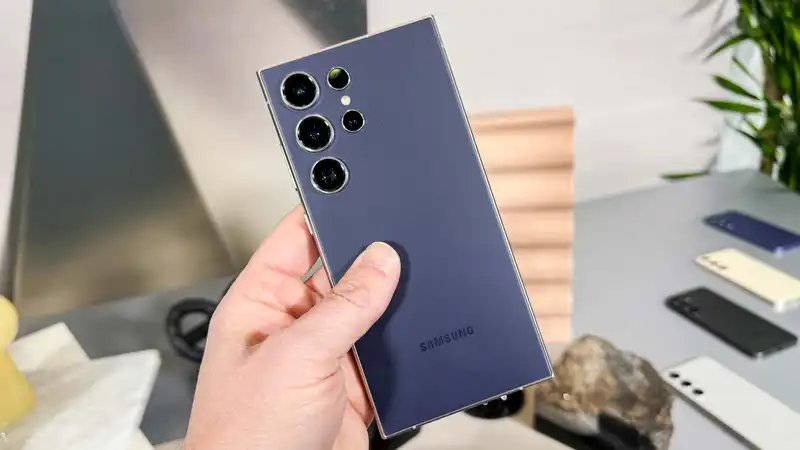Samsung's Galaxy S24's claim that it can use its AI image generation capabilities in an accountable manner has taken a hit as it has been revealed how easy it is to erase evidence using the same tools.
Images edited on the Galaxy S24 using the generative editing feature automatically display a watermark in the lower left corner indicating that they have been tweaked. However, users such as Razar_the_Raven on Twitter/X and the US Gizmodo team have shown that if you edit a processed image to remove the double star watermark, it will not reapply.
I tried it myself on a selfie taken with a Galaxy S24 Ultra and it was exactly as described. After asking the phone to remove the background and make a new one, the new version did indeed feature a watermark.
However, after simply cropping the image from the lower left corner, the watermark disappeared.
Using the generative AI eraser tool on the Galaxy S24, the watermark was applied again. However, using the object eraser from elsewhere in the photo editor easily erased the watermark.
The object eraser has been on Samsung phones since the 2021 One UI 3 software update; it is not part of the new Galaxy AI suite of features introduced in the Galaxy S24, despite using similar technology behind the scenes, It is speculated that this is why the AI watermark can be removed without triggering the phone to add an alternative feature.
When viewing the image in the Gallery, I see a "Modified with Generative edit" badge that cannot be removed. However, after opening the original and edited photos on my laptop, there was no clear metadata tag indicating that one was an AI edit and the other was not. Most people would not check metadata in this way, and metadata is editable and can be hidden if you are looking at images uploaded to other services.
In this context, removing the watermark is relatively harmless. The worst I could do with this photo is to mislead you into thinking that my photo-editing skills are better than they actually are, or that if my performance is good enough, I did indeed go a little bit into the scary purple void last Friday. But adding yet another unlabeled AI-edited image to the ever-increasing number of images circulating on the Internet is exactly the problem Samsung is trying to avoid.
Samsung's small print does not guarantee watermarking, but rather claims that the watermark "could be overlaid" on the image. For this system to be effective, however, the watermark must be reapplied to the photo after each edit to ensure that the watermark is not easily erased. Also, clearer metadata tags that can be read from outside the device would be beneficial. Hopefully, Samsung will resolve this before or shortly after the retail launch of the Galaxy S24 on January 31.
Fortunately, other features should not be too cumbersome. Generating summaries of notes and online articles, labeling speakers on voice recordings, and using Circle to Search to find answers all seem like useful and less useful AI applications. Plus, there are hardware upgrades like the larger battery in all S24 versions and the gorgeous titanium body of the Ultra model.
You can read more about these in our Galaxy S24 Hands-on and Galaxy S24 Ultra Hands-on.










Comments